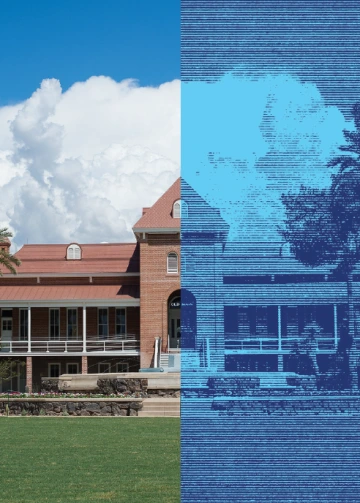
Digital twins are interactive, 3D virtual representations used in engineering, construction and manufacturing. One example: modeling an entire aircraft down to the electromagnetic fields generated by its various components before procuring a single rivet. They offer unprecedented data tools for safety planning, energy management and more.
Combining satellite photos, digital room designs, georeferencing, machine learning and AI, a team at the University of Arizona College of Applied Science & Technology have now completed the first phase of a digital twin of main campus: all 330 buildings, as well as streets and outdoor spaces, all to precise scale.
In their full expression, digital twins don’t simply reproduce exact dimensions, they perfectly simulate physical properties like vibration, heating and cooling, materials expansion and contraction, light, air flow and more. They provide next-generation fidelity down to scale recreation of literal nuts
and bolts, plus the ability to integrate data sources for a functional operating model that can be shared across teams.
Those applications will aid renovations and new construction on campus, but the tool’s ultimate value extends much further: modeling heating, cooling, stormwater runoff and Wi-Fi reception, optimizing human and vehicle traffic during events, predicting power consumption, planning for emergency scenarios and more.
